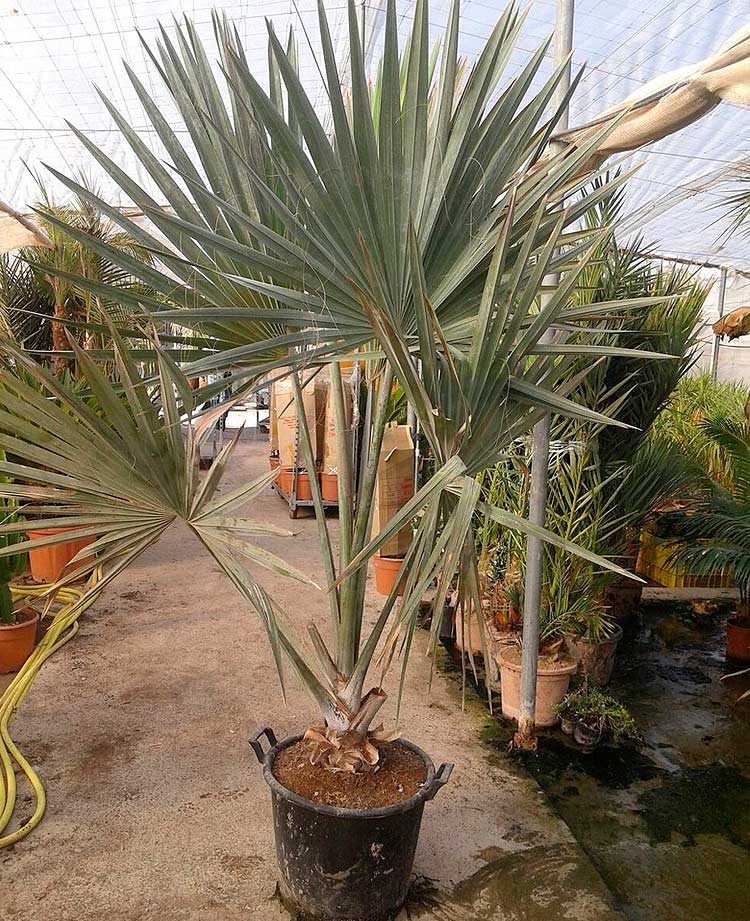








This palm tree, also known as the "Blue Palm of Madagascar", is endemic to this very site from which it receives its name. It is characterized by being a very tall palm tree with a curved base much thicker than its crown, its leaves are also very curious due to their rounded shape and their large size, being able to reach 3 meters when mature. A very resistant palm tree that likes areas with climates similar to tropical ones.
We have different measures consult ...
 Shipments to Spain and Portugal ...
Shipments to Spain and Portugal ...
The cost of transportation depends on the province or country.
BISMARCKIA NOBILIS
This palm, belonging to the Arecaceae family, also receives the common names of "Blue Palm of Madagascar" or "Bismarck Palm". It is an endemic species of Madagascar. It is characterized by having the trunks of a curious grayish color with ringed grooves, being wider or domed, without leaves at its base. It is a very slender palm that can measure up to 25 meters in height (in its natural habitat), normally they usually reach between 10 to 15 meters. Its leaves also have a very curious shape, since they are rounded and when they reach maturity they can be up to 3 meters wide. This palm tree is perfect for planting in dry areas, which resist strong winds very well. It does not tolerate frost well and prefers a subtropical climate. Perfect for planting in the garden, it can withstand up to 5 degrees below zero.
CARE FOR YOUR PALM TREES
Las Palmeras can be had both indoors and outdoors. There are varieties that are better adapted to the outdoors or garden, and there are others better adapted to live indoors and in pots.
Indoors
- Plants in general prefer places with direct light or that have good lighting, it will always be preferable next to a window, on a balcony or on a terrace.
- It is essential that they have good drainage, both in soil and in pot. It is advisable to put a layer of engraving on the bottom of the pot.
- The ideal substrate for palm trees has to be rich in organic matter, a good worm humus.
- Irrigation has to be every 3 or 4 days, before making sure that the substrate is dry, excess water is not good.
Outside
- There are palm trees that prefer direct sun and others prefer more shady areas, it is also very important to take into account the climate of the place where you live, there are palm trees well adapted to low temperatures and other palm trees that prefer warmer climates.
- It is essential that they have good drainage, both in soil and in pot. Water puddles are not good for plants in general.
- The ideal substrate for palm trees has to be rich in organic matter, a good worm humus, Compost or Manure would be enough.
- Irrigation, as the palm tree is on the ground and being more intense than in a pot, it can be one watering a week.
- A preventive treatment against diseases with repeated spraying 3 or 4 times a year allows to keep some species of palm trees safe from possible pests.
Specific References
You might also like